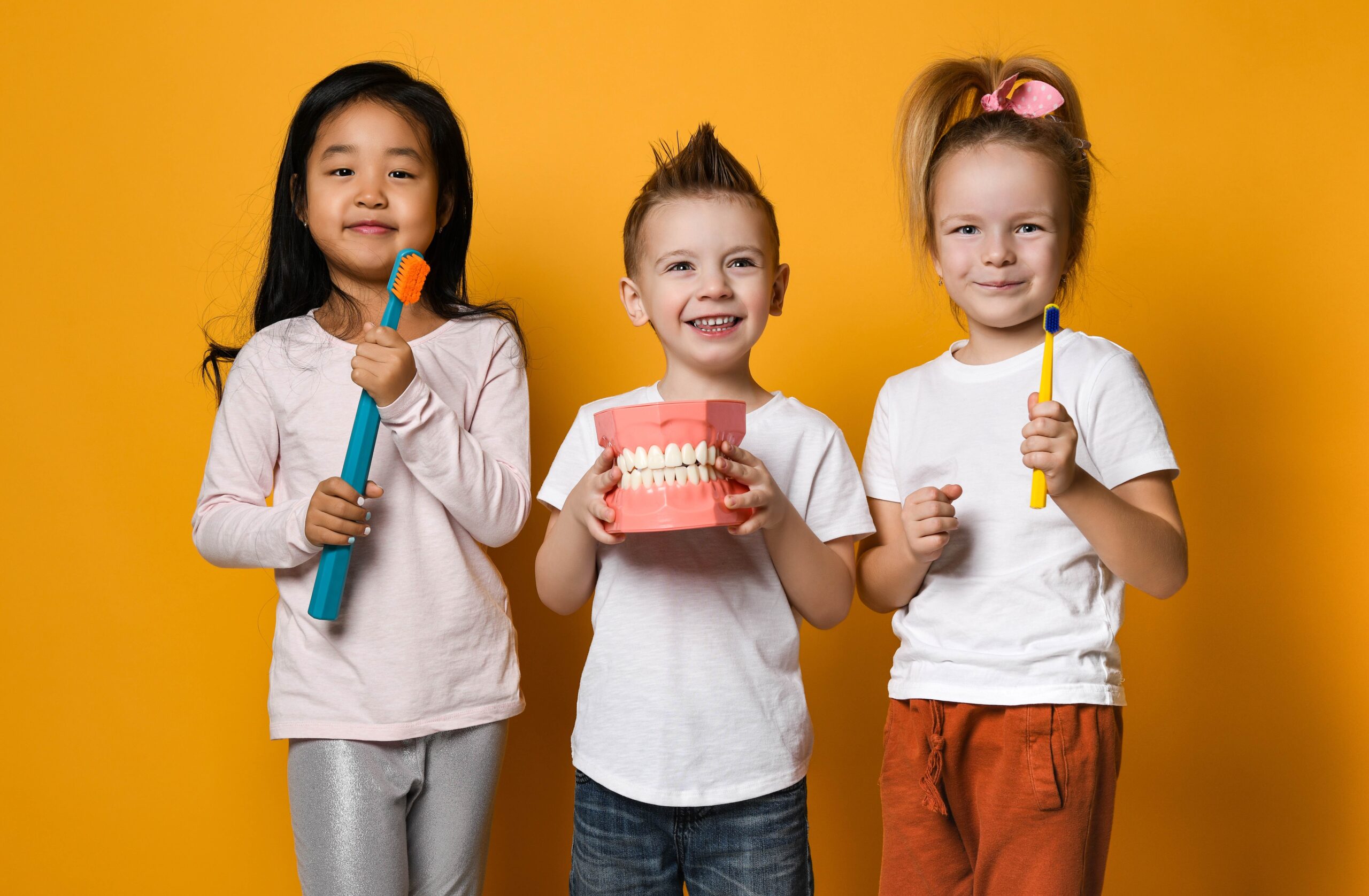

Children have 20 baby, or primary, teeth – 10 on the top and 10 on the bottom. The primary teeth begin to come in at around 6 months of age, and by the time your child is 2 to 3 years old, all of the primary teeth should have come in. On the flip side, most adults have 32 permanent teeth, including four wisdom teeth, which are often removed for lack of space in the mouth.
Primary teeth are technically called deciduous teeth because they eventually fall out just like leaves fall from deciduous trees in autumn. Generally, the primary incisors, the middle front teeth, begin to loosen and fall out by around age 6. The molars in the back of the mouth are typically lost between ages 10 and 12, and are replaced with permanent teeth by about age 13.
Primary teeth may be in the mouth for just a short time, but they play a vital role when they are there. They reserve space for the permanent teeth, give the face a natural appearance, assist in the development of clear speech, and help the children get good nutrition by enabling them to chew foods effectively.
The primary teeth act as place-holders for the permanent teeth. But if they become infected or decay and fall out too soon, the permanent teeth can come in early and be crooked due to limited space, which often makes braces necessary. Orthodontists report that 30 percent of their cases are the result of the premature loss of primary teeth.
Further, healthy primary teeth give the permanent teeth a healthy start. Decay or infection in the primary teeth can cause damage to the permanent teeth developing beneath them. That means how we care for our children’s primary teeth affects the health of their permanent teeth, as well as their overall oral health.
Unfortunately, 40 percent of children in the United States have tooth decay by the time they reach kindergarten. Tooth decay is the result of poor oral health, which can lead to gum disease and cavities. Cavities are caused by the breakdown of the tooth by acids produced by bacteria. Cavities are one of the most common chronic diseases of childhood in the US.
But cavities in children can be prevented by teaching them good dental health habits right from the start then modeling those behaviors to show our children the importance of a good daily routine. It’s essential to establish a proper oral hygiene routine early in life to help ensure the development of strong and healthy teeth later in life.
The foundation for healthy permanent teeth is formed during the first years of life, and caring for your baby’s teeth begins before the teeth even show up.
The US Centers for Disease Control and Prevention recommend that you wipe your baby’s gums twice a day with a soft, clean cloth in the morning after the first feeding and right before bed. Doing this eliminates any bacteria and sugars that can cause cavities in the teeth that are sitting just under the surface.
Once your child’s teeth begin to come in, start brushing twice a day with a soft, small-bristled toothbrush and plain water. When there are two or more teeth next to one another, begin to gently floss between the teeth. The American Dental Association recommends that children see a dentist by their first birthday. Consider a dentist who specializes in children. Pediatric dentists are trained to handle the unique issues associated with children’s dental health.
At around age 2, as your child gets more teeth, you can begin using a small amount of fluoride toothpaste, about the size of a grain of rice. Children ages 3 and older should use only a pea-sized amount of fluoride toothpaste.
These limits are necessary to keep your child from swallowing the fluoride toothpaste when they brush. Many cities around the US fluoridate their water, and ingesting too much fluoride can lead to dental fluorosis or skeletal fluorosis, which can damage bones and joints.
Continue to brush your child’s teeth until they insist on brushing themselves, but supervise closely to ensure that they don’t swallow a lot of toothpaste. At around 6 years old, children are generally able to brush their teeth using the appropriate technique. Still, supervise your child’s daily toothbrushing task until the eruption of the second molar at around the age of 13.
For long-term dental health, your child should follow the ADA’s recommendations for home oral care: brush twice a day with fluoride toothpaste, clean between the teeth daily (floss), eat a healthy diet that limits sugary drinks and snacks, and see a dentist regularly for prevention and treatment of oral disease.
Improve your child’s chances for keeping their teeth for life. Start them off strong with good oral care.




Leave a Reply